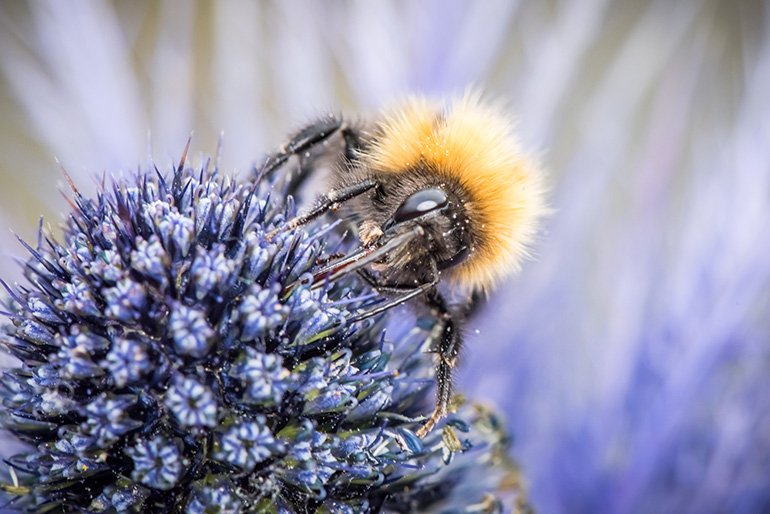Population Genomics of Pollinating Insects
Using bumblebee genomics to better understand current threats to UK pollinator populations
Led by: Wilfried Haerty
Start date: 2019
End date: Ongonig
Funding: BBSRC
Pollinator species are in decline all over Europe. Bees, in particular, are under severe threat from both habitat loss and harmful pesticides. Of 270 bee species in the UK, 35 are under threat, while we’ve lost 13 species already in the past few decades.
That decline poses a severe problem for biodiversity and agriculture. Bees, hoverflies and other insects fertilise a vast amount of crops and wildflowers, both of which become less productive with a decline in pollinating insects. If we are to continue to feed ourselves, and enjoy a biodiverse planet for generations to come, we must better understand and protect pollinators.
Earlham Institute has already begun to sequence the genomes of important bee species. This project - in collaboration with researchers at Natural History Museum (NHM), Imperial College London, the University of East Anglia (UEA), the University of Plymouth (UoP), and the Bumblebee Conservation Trust (BBCT) - is capturing a snapshot of bee populations in the UK, assessing the structure and health of these populations at the genetic level.
The Evolutionary Genomics Group at EI is working on species that are currently flourishing in the UK, with the aim of generating similar datasets for species in decline. This important comparative approach has the power to identify genetic changes that could be associated with population health in our native bee populations.

Pollinators are under threat, and we need to understand better ways to protect them.
Thanks to modern genomic methods, we are able to sequence and analyse the genomes of thousands of individuals to get a better understanding of how their populations vary across the UK, and through time. By studying species that are flourishing in the current environment, we will learn about the pressures shaping their populations and how they interact with our agricultural system.
Through studying bee species that are in decline, we will provide primary conservation resources. We will deliver insight into these threatened species at a resolution never possible before, enabling prioritisation of key population centers and potential routes to genetic rescue.